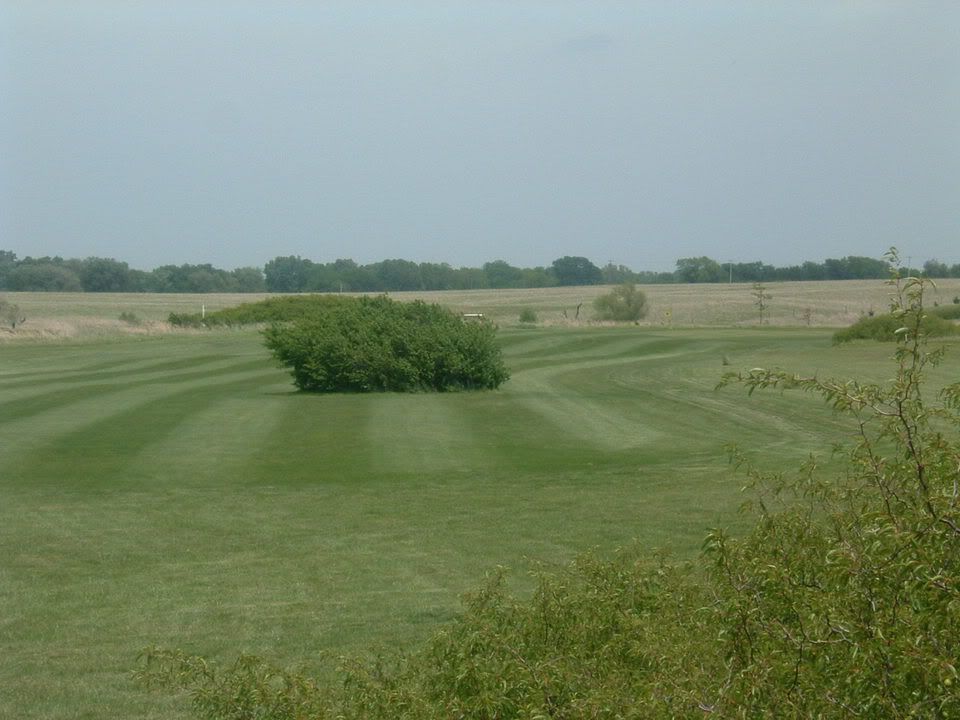Tony,
When I saw Adam's initial post I also thought of Chisholm Trail.
At $20 max for weekend play it really is a great deal. Chisholm Trail is
located within a mile of I-70 at the Russell Stover Candy factory exit
just west of Abeline, KS. Here are a few pictures.
Tee shot from top of dune on par-4 2nd. The hole doglegs left and you can cut off as much of the thicket as you dare.
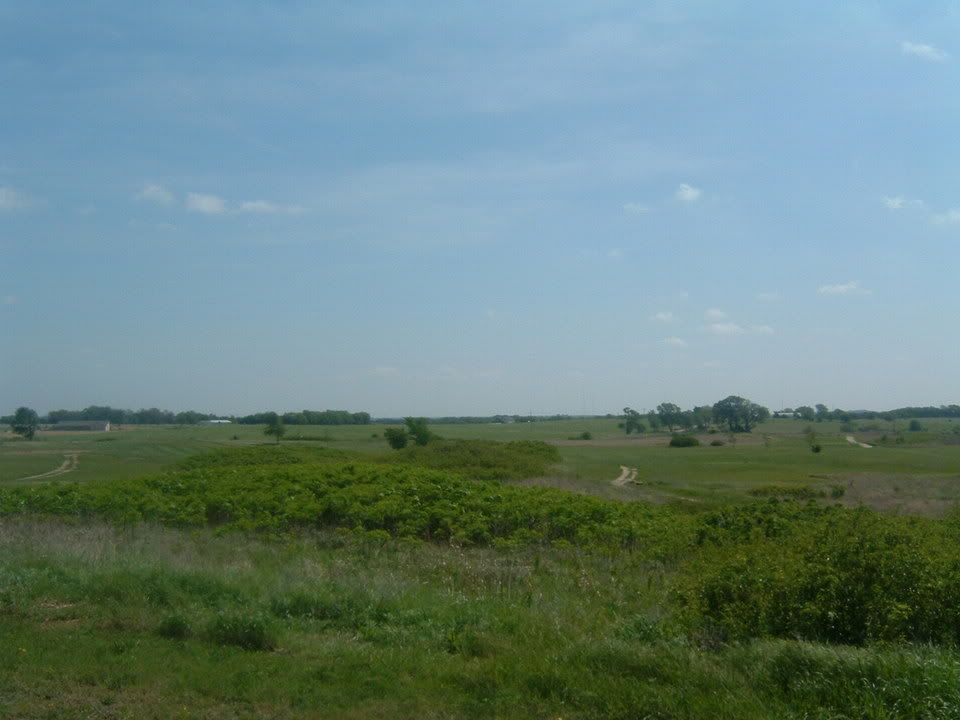
Par-3 3rd, plays directly into the strong prevailing south wind
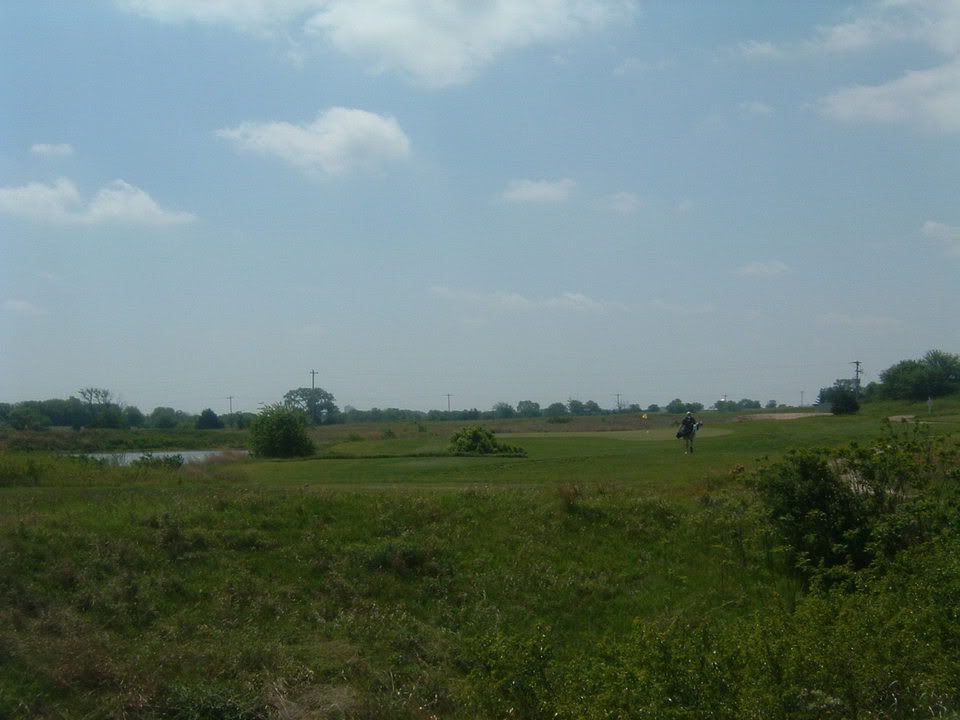
Tee shot on the par-5 4th. A drive challenging the trouble down the left leaves a shorter approach up the hill to the green in the following picture.
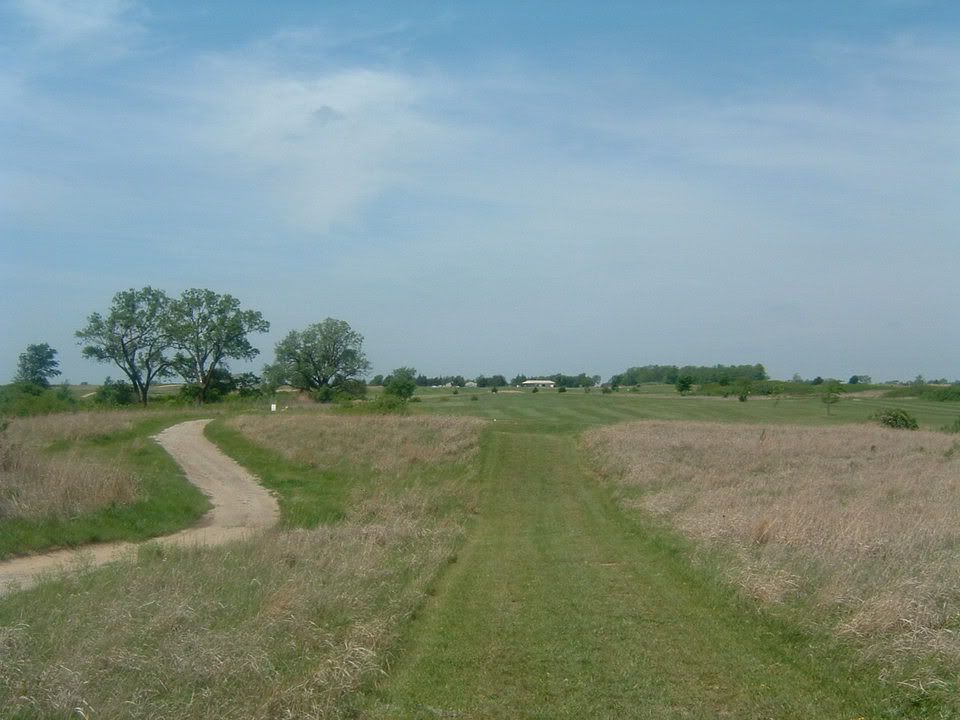
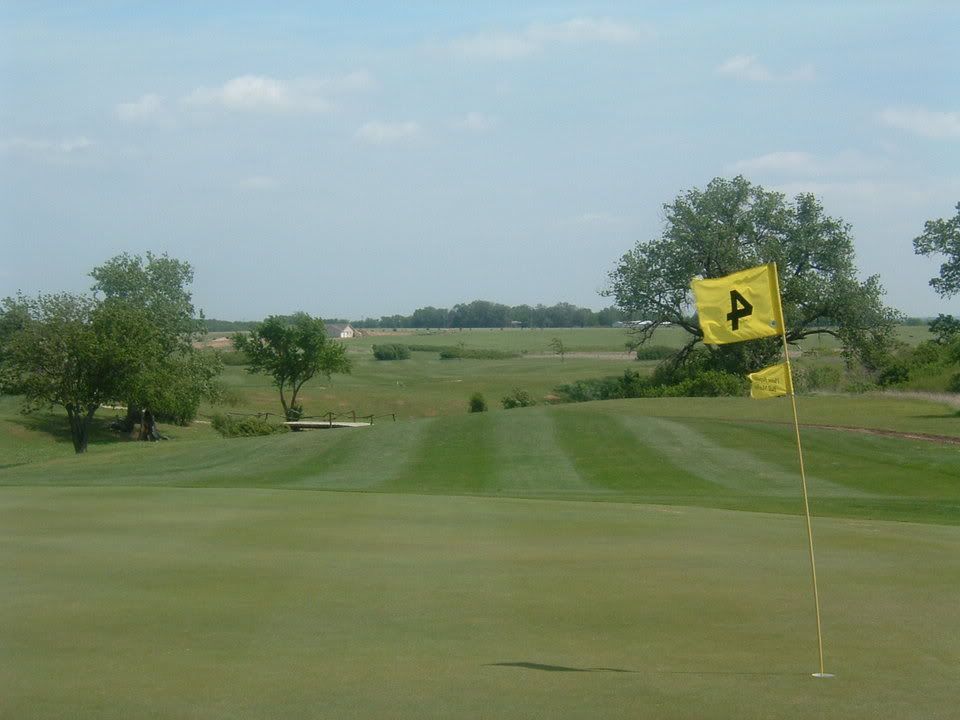
The tee shot on the par-4 6th. Several fairway bunkers such as this one have been added around the course and the general upkeep continues to improve.
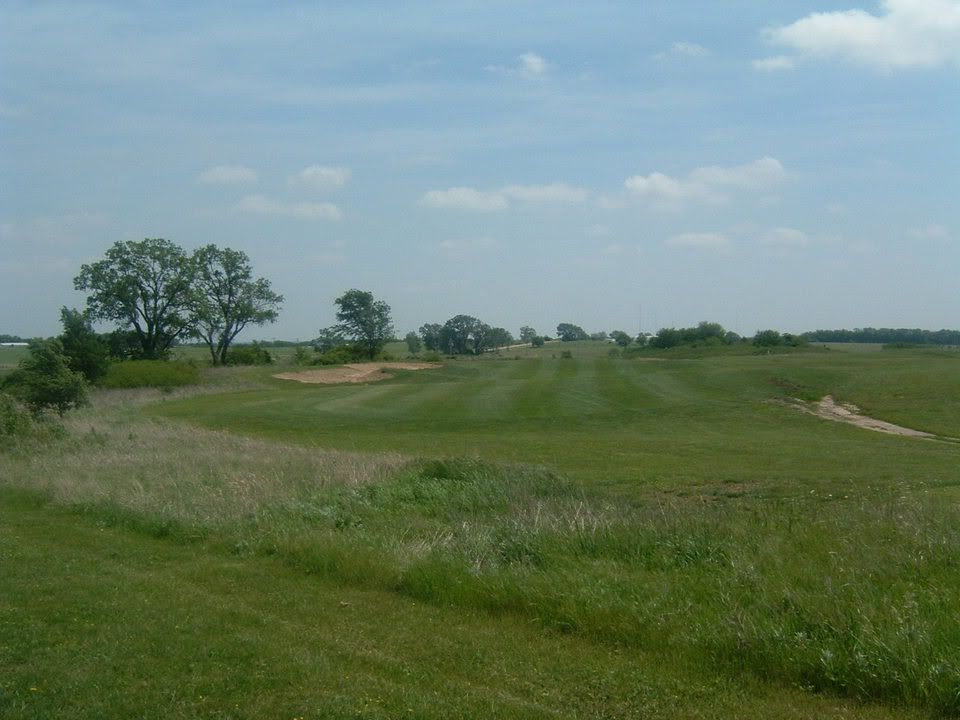
Approach ot the par-4 7th. The best hole on the course in my opinion. A downhill drive that skirts the large fairway bunker (not pictured) cut into a dune on the left side of the fairway leaves this slightly uphill approach.
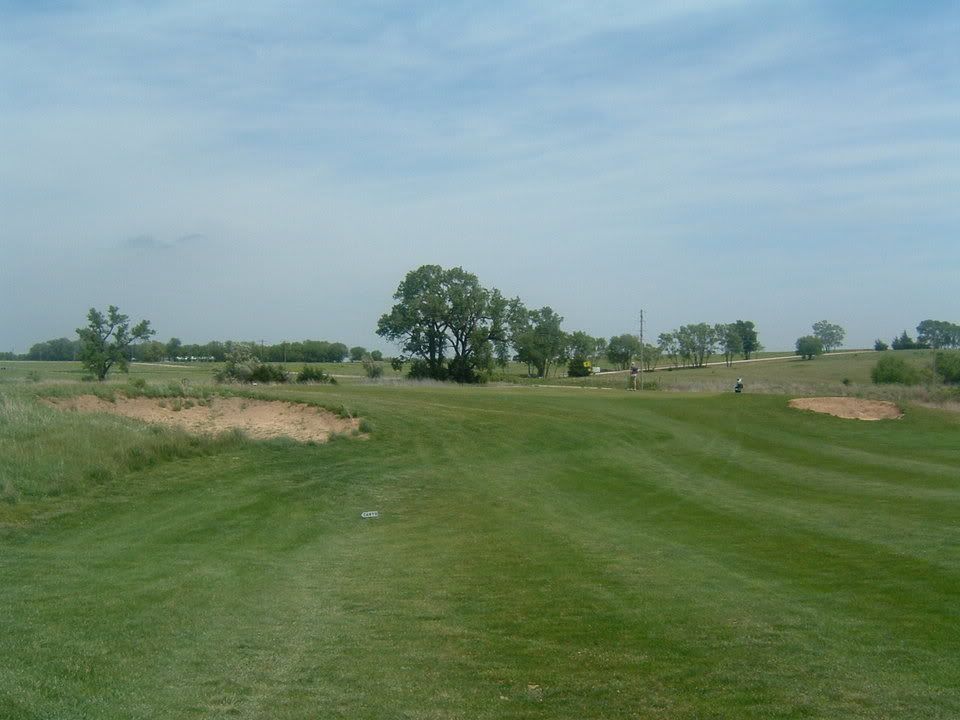
Par-3 12th. No more than a short iron, it usually plays directly downwind and stopping the ball on the rolling, rear-sloping green is difficult.
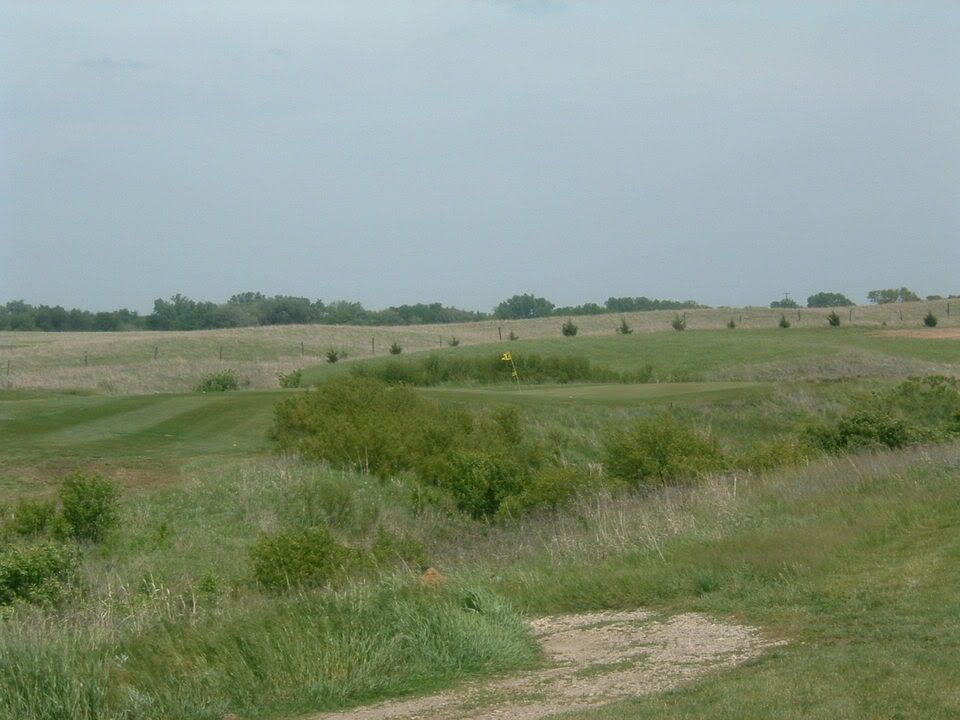

The square green on the par-4 13th. Note the boundry fence very near the back of the green.

A hallmark of Chisholm Trail, sloping greens that fit seamlessly with the natural terrain. This is a view from left of the 15th.
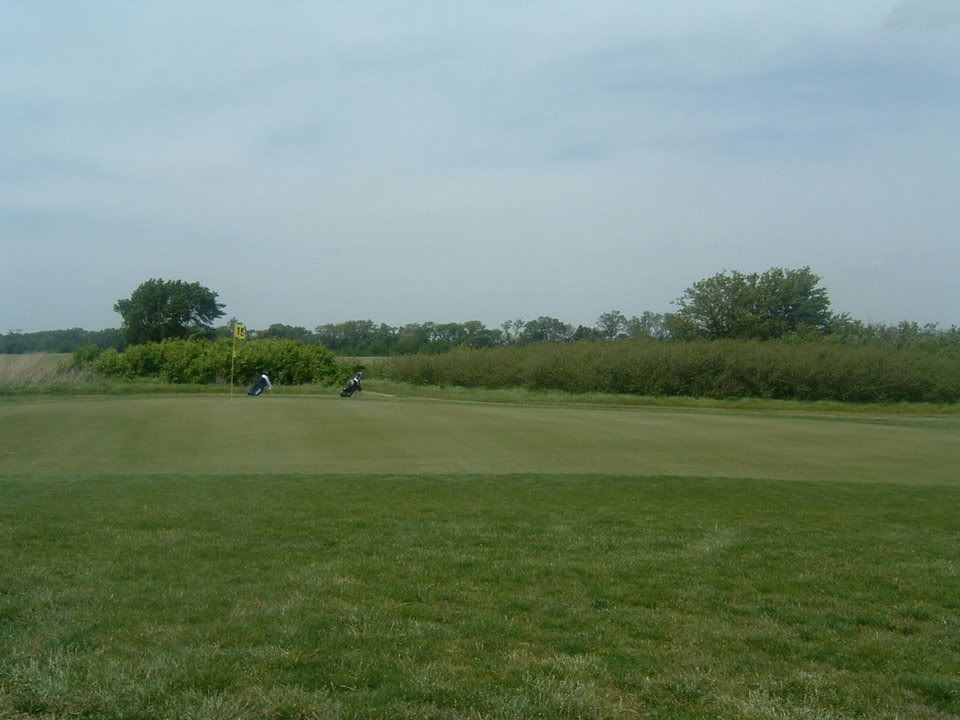
A view from the tee of the drivable 300yd 16th. No need for bunkers on this challenging little hole.
